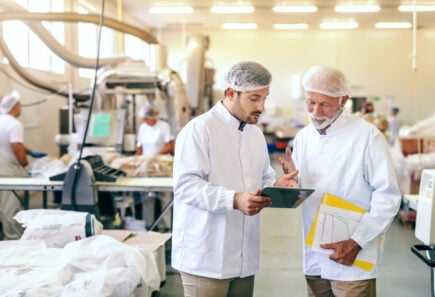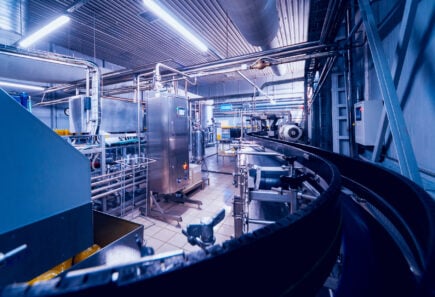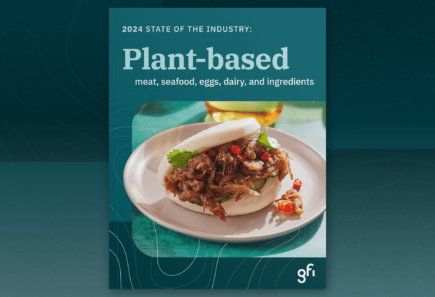
Plant-based meat manufacturing capacity and pathways for expansion
The plant-based meat category has experienced strong growth over the past decade and supply chains must keep pace to avoid shortages. This analysis by GFI and Bright Green Partners quantifies the existing global plant-based meat manufacturing landscape and evaluates pathways for expanding capacity to meet future demand.
Explore the reports
Our analysis includes a white paper along with industry and policy action papers.
Introduction
This analysis quantifies existing global plant-based meat manufacturing capacity and evaluates the potential for and trade-offs of retrofitting existing facilities to build additional capacity. To explore potential avenues for capacity expansion, this analysis identifies parallel industries with facilities suitable for retrofitting, provides criteria for facility selection, and compares the associated capital expenditure (Capex), lead times, and other trade-offs of greenfield construction versus retrofitting to grow capacity. This analysis provides a greater understanding of the pathways for building manufacturing capacity and the need for timely investment to avoid shortages and improve affordability. Increasing the geographic spread and scale of production capacity, along with continued product innovation, is critical for appealing to consumers and ensuring long-term category growth.
Global plant-based meat production capacity was ~2.2 million metric tons in 2022
Based on 2022 retail sales data, industry interviews, and a survey of existing facilities, we estimate that the global plant-based meat production capacity was ~2.2 million metric tons (MMT) in 2022, the majority of which is in Europe (41%) and North America (34%). Although current capacity is well-utilized, even moderate market growth may outstrip the industry’s ability to serve demand within the next few years. This may lead to a capacity shortage if expansion is not adequately planned.
Retrofitting existing facilities is an efficient solution to quickly scale capacity
Our analysis demonstrates the significant potential benefits of retrofitting existing suitable facilities in parallel industries, requiring a third of the lead time and a fifth of the Capex, on average, compared to greenfield construction. We conclude that the retrofitting pathway is an efficient and effective solution to quickly scale capacity that affords considerable Capex savings. This is particularly important because industry participants are not likely to perfectly align planned capacity with realized market growth. The greenfield development pathway is riskier since it requires significant up-front Capex investment and approximately three years to build a new facility. However, in the long run, greenfield development allows manufacturers to optimize their operating efficiency and potentially lower production costs.

Watch our webinar
Get an overview of our new analysis, including recommendations to both the public and private sectors seeking to proactively and conscientiously expand global production capacity for plant-based meat products.
Photo credit: Impossible Foods
Explore the reports

Analysis white paper
This white paper describes the current state of plant-based meat manufacturing capacity and the trade-offs and potential of retrofitting and greenfield development to grow capacity.

Policy action paper
This action paper, intended specifically for policymakers, summarizes the key findings from this analysis and outlines recommended actions to facilitate the plant-based meat industry’s continued infrastructure expansion.

Industry action paper
This action paper, intended specifically for industry participants, summarizes the key findings from this analysis and outlines recommended actions to facilitate the plant-based meat industry’s continued infrastructure expansion.

About Bright Green Partners
Bright Green Partners is the leading international strategy consulting boutique that has been exclusively focused on the alternative protein industry ever since its inception. Its in-depth ingredient, product, customer, and market customer knowledge as well as its technical expertise are driven by the symbiosis of its core team of strategy consultants and its unmatched network of alt protein experts. BGP works in all parts of the value chain in the field of plant-, fermentation-, and cell-based alternative meat & dairy and the project scope ranges from strategy definition to design studies and technology reviews for specific production facilities.





